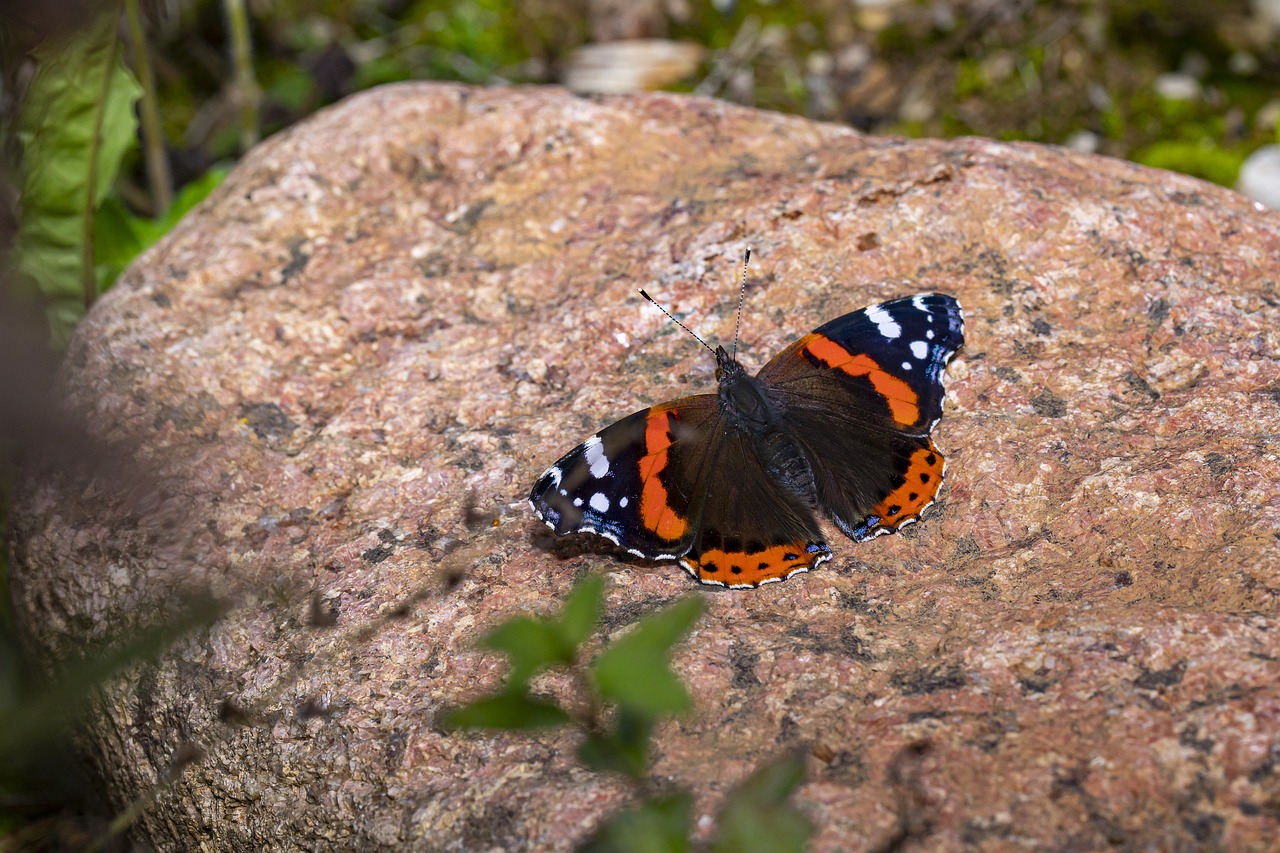The Red Admiral (Vanessa atalanta) is a well-known and striking butterfly, celebrated for its vibrant colors and migratory behavior. Here’s an overview of this remarkable insect:
Appearance
Adult Butterfly:
- Wingspan: Approximately 50-65 millimeters (2-2.5 inches).
- Coloration:
- Forewings: Black with bright red bands and white spots near the tips.
- Hindwings: Black with red marginal bands and blue spots near the rear edges.
- Body: Dark brown to black, with reddish markings.
Habitat
- Preferred Habitats: Red Admirals can be found in a variety of habitats including woodlands, gardens, parks, meadows, and coastal areas.
- Geographic Range: They are widely distributed across temperate regions of North America, Europe, North Africa, and Asia.
Behavior
- Feeding:
- Caterpillars: Primarily feed on nettles (Urtica species).
- Adults: Feed on nectar from flowers, sap flows, and overripe fruit. They are particularly fond of thistles, buddleia, and ivy flowers.
- Migration: Notable for their migratory behavior, Red Admirals travel from southern regions to northern areas in the spring and summer, and then return southward in the fall.
Life Cycle
Eggs:
- Laying: Females lay single green eggs on the host plant, usually nettles.
- Hatching: Eggs hatch in about a week.
Caterpillars:
- Appearance: Spiny and vary in color from black to yellow-green.
- Development: They feed on the leaves of the host plant and go through several molts before pupating.
Pupae:
- Chrysalis: Pupation occurs within a curled leaf. The chrysalis can be brown or green with gold spots.
- Duration: The pupal stage lasts about two weeks.
Adults:
- Emergence: Adults emerge from the chrysalis and are active flyers.
- Lifespan: Adults can live for several months, particularly those that migrate.
Identification Tips
- Flight Pattern: Erratic and fast, often seen basking in the sun with wings open.
- Distinct Markings: The striking red bands and white spots on the forewings are key identification markers.
Ecological Role
- Pollination: As nectar feeders, they play a role in pollinating various plants.
- Food Source: Serve as prey for birds, spiders, and other predators.
Conservation Status
- Population: Generally stable, though their numbers can fluctuate with climate conditions.
- Threats: Habitat loss, climate change, and use of pesticides can impact local populations.
Conservation Efforts
- Habitat Preservation: Maintaining and protecting their natural habitats, such as nettle patches and wildflower areas.
- Gardening: Planting nectar-rich flowers and avoiding pesticides can support local populations.
Human Interaction
- Garden Visitors: Commonly seen in gardens, particularly attracted to flowering plants.
- Positive Impact: Their presence indicates a healthy environment and they contribute to the ecosystem through pollination.
Summary
The Red Admiral (Vanessa atalanta) is a visually striking butterfly with its bold black, red, and white coloration. Widely distributed across temperate regions, these butterflies are known for their migratory behavior and adaptability to various habitats. They play a role in pollination and serve as indicators of a healthy environment. Conservation efforts focused on habitat preservation and gardening practices can help sustain their populations. Recognizable by their distinct wing patterns and erratic flight, Red Admirals are a favorite among butterfly enthusiasts and gardeners alike.
Views: 325
Subscribe to the newsletter:
